Popular Articles
- Avatrol Interactions
- Avatrol Supplement Facts
- Hemorrhoids - 12 Foods to Avoid
- Hemorrhoid Treatment - Garlic Suppository
- Hemorrhoid Product Reviewed
- How to Get Rid of Hemorrhoids
- Hem Relief Review - Is Hem Relief Effective?
- 6 Over the Counter Hemorrhoid Treatments
- Supplements for Hemorrhoids & Vitamins Too!
- Hem B Gone Reviewed - Does Hem-B-Gone Work?
- More Articles ...
 Natural Hemorrhoid TreatmentsIn This Article
Hemorrhoids can be very uncomfortable and make you itch for an immediate cure. In this article, you will read about the 8 most effective natural remedies for hemorrhoids. These are safe and proven herbs that you can easily find. Find out how these natural treatments work and which one is best for the type of hemorrhoids you want to get rid of.
Hemorrhoids are painful and somewhat embarrassing, but most people get them at one time or another and it is an incredibly common health complaint. Hemorrhoids usually appear when there is stress on the veins surrounding the anus, which is typically caused by sitting too much, constipation, and extra weight and pressure in the area. Women who are pregnant or who have just given birth are far more likely to suffer from hemorrhoid issues than women who are not currently pregnant, and individuals who struggle with frequent constipation and who are overweight are also more likely to have hemorrhoid issues. The remedies outlined in this article can help relieve hemorrhoid pain, both for the short term with topical treatments and in the long-term, with internal herbs, supplements, and lifestyle changes that will relieve the swelling in the area and help prevent the pain from returning. With enough care and attention, you may even be able to avoid hemorrhoid surgery. What Are Hemorrhoids?Hemorrhoids are swollen and inflamed veins located in and around the lower part of the rectum and the anus. The inflammation is caused by an increase in pressure within these veins. In the beginning, this causes a dull throbbing pain but the pain can quickly turn into severe aching, irritation, discomfort, and bleeding. There are two types of hemorrhoids: internal and external hemorrhoids. Internal hemorrhoid affects the soft tissues of the anal canal and it is normally caused by too much pressure on the internal veins. A bright red color on the toilet tissue just used after a bowel movement or blood drips from the anus into the toilet bowl is a definitive sign of internal hemorrhoids. Once the hemorrhoidal veins stretch and bulge out of the anus they become prolapsed hemorrhoids. Internal hemorrhoids can only become painful when the clots block blood flow in the inflamed veins. External hemorrhoids, on the other hand, results when the external veins around the anus become swollen. These swollen veins can also easily bleed, either from straining or rubbing. This type of hemorrhoids may cause irritation and itching in the rectal area. External hemorrhoids can also be prolapsed and blood clots can also form in the affected veins. The blockage of veins by blood clots is referred to as thrombosis. Thrombosed hemorrhoids may look frightening, but they are easily treated with natural remedies. The most common signs of hemorrhoids include are listed in the table below.
Causes of hemorrhoidsHemorrhoids can be caused by several factors. For example, a congested liver can cause hemorrhoids. This happens because veins from the small and large intestines, the pancreas, and the anal region are all channeled into the liver. If blood circulation through the liver is backed up due to liver congestion, the blood coming from the intestines will flow to the rectal and anal area. This causes back pressure in the veins surrounding the rectum, causing them to bulge and therefore resulting in hemorrhoids. Hemorrhoids can also occur due to chronic constipation, straining during a bowel movement, aging, and poor fiber intake. In pregnant women, it mostly occurs due to the pressure of the growing uterus on the major veins. Whatever the cause, hemorrhoids are treatable and the following natural remedies are some of the most effective ways of treating hemorrhoids in alternative medicine. Natural Hemorrhoid Treatments: HerbsResearch has shown that supporting the veins with herbs and supplements is an effective way to prevent hemorrhoids from returning. According to these studies, supplements can help relieve pressure on the area and prevent the straining of the tissues in the area as well as help repair any existing damage. Additionally, some herbs can help reduce constipation and other bowel problems that can sometimes be the cause of hemorrhoid pain. When combined with topical treatments, herbs can be an effective treatment and remedy for hemorrhoids, not only for short-term when flare-ups occur but also in preventing the painful swelling from returning in the future. 1. Aloe Vera
Aloe vera is known to have many therapeutic powers. It is extensively used as a lotion or cream to heal diverse skin conditions. The anti-inflammatory, anti-allergic, and anti-bacterial properties of aloe vera make it an effective natural remedy for alleviating hemorrhoids symptoms. The gel of aloe vera can be directly applied to the affected area to get relief from the pain, itching, burning, and irritation. How Does It Work?Using aloe for hemorrhoids can soothe and calm the inflamed tissues, thus bringing immediate relief. The anti-inflammatory properties aid in shrinking the swollen hemorrhoidal tissue and easing the pain. This facilitates easy bowel movements. Aloe vera also works as a wonderful astringent. This makes the plant an effective treatment for hemorrhoids. Astringents aid in shrinking hemorrhoidal tissues and soothing skin irritation. Directions For Use:If you have an aloe vera plant at home then you can break the bottom part of the leaf and apply the gel directly to the affected area. Use your index finger to evenly massage it on the affected area. You can also insert some gel inside the anus using a syringe to heal internal hemorrhoids. It is known to reduce bleeding and provide relief from pain. You can apply the gel as often as desired, but remember to not use it after each bowel movement, after a bath, and before going to bed. What Are The Side Effects?The topical use of aloe for hemorrhoids is not connected with any significant side effects. When taken orally, aloe vera may cause some side effects such as abdominal cramps and diarrhea. Aloe may also lower blood glucose levels, so people with diabetes should be careful when taking it orally. Before using any supplement or remedy that contains aloe vera, you must tell your doctor or health care provider about any alternative and complementary practices you use. Are There Any Drug Interactions?Aloe latex is known to lower potassium levels in the body. You must avoid digoxin (Lanoxin) when taking it by mouth as this can increase the side effects of digoxin. Aloe is also known to decrease blood sugar levels in the body. So, it may interact with antidiabetes such as: Glimepiride, glyburide, insulin, metformin, pioglitazone, rosiglitazone, chlorpropamide, glipizide, and tolbutamide. Aloe might also decrease the clotting of the blood, so you must avoid taking it before surgery or with other anticoagulants such as Sevoflurane (Ultane). Where to Find Aloe Products?If you do not have an aloe vera plant then you can use the organic whole leaves to heal your hemorrhoids. They are available in most health food stores. Aloe vera products are also available in the form of hemorrhoids suppositories that can be inserted into the anus to provide relief from the pain, burning, itching, and irritation. You can put the suppositories in the freezer before using them. This helps in providing more relief from the pain and inflammation. 2. Psyllium
It contains dietary fiber and phytochemicals like alkaloids, flavonoids, amino acids, proteins, oils, tannins, and a variety of sugars and carbohydrates. Due to its high fiber content, it makes the stool softer and in this way relieves constipation, hemorrhoids, irritable bowel syndrome, and other gastrointestinal disorders. When psyllium husk comes in contact with water it swells and forms a laxative that helps to stimulate the transport of waste materials through the intestinal tract. Psyllium also encourages the growth of friendly and harmless intestinal bacteria such as Lactobacillus acidophilus and bifidobacteria, which help in regulating bowel movements. It is an excellent intestinal cleanser and a detoxification agent because it speeds up the removal of waste from the digestive system, thus reducing the time toxins spend in the body. This helps in reducing the risk of having various diseases like cancer. To take psyllium for hemorrhoids, mix one teaspoon of psyllium seeds with a glass of warm water. This should be done three times daily and taken with meals for about 2 - 3 weeks. However, psyllium should be taken with a large amount of water since it absorbs fluids in the intestine. Doing this will prevent constipation. 3. Butcher’s Broom
It is notably rich in flavonoid antioxidants such as rutin. Other phytochemicals found in the plant include a group of saponin glycosides called ruscogenins. Ruscogenins have anti-inflammatory and vasoconstrictive properties. Due to its anti-inflammatory properties, butcher’s broom can prevent fluid retention, strengthen capillary walls, tighten veins, and enhance blood flow. All of these effects contribute to the shrinking of hemorrhoids. Butcher’s broom herbal extract can be applied directly to hemorrhoids. Alternatively, herbal tea can be made from its leaves. This tea is prepared by steeping one teaspoon of butcher’s broom in hot water for about 10 to 15 minutes. The tea should be taken 2 to 3 times daily for a quick recovery. There are no significant side effects associated with butcher’s broom, but nausea may occur. Due to its anti-platelet effects, this herb should not be combined with anticoagulants such as warfarin. The combination increases the risk of bleeding. Also, those placed on MAOIs (monoamine oxidase inhibitors) should avoid butcher's broom because the tyramine in the herb can interact with MAOIs to increase blood pressure. 4. Horse Chestnut
Horse chestnut (Aesculus hippocastanum) is a tree that is cultivated for its flower clusters. The tree typically has white, yellow, or red flowers. The tree is related to the Ohio buckeye tree (but the buckeye tree does not have the same properties and is poisonous). The tree produces large seeds, which are called horse chestnuts. The seeds and flowers have been a part of traditional medicine for thousands of years. In ancient Europe, carrying the seeds in your pocket was thought to ward off arthritis and rheumatism. Today, we know that eating the chestnut seeds has a powerful anti-inflammatory effect on the body, and horse chestnut is used in many natural arthritis treatments. In the 1800s, the French were the first to use horse chestnut extract for treating hemorrhoids, according to the New York University Medical Center. The German Magazine, Curtis’s Botanical, published an article about the back story behind the horse chestnut’s name in 2000. The name “horse chestnut” was given to the plant because it was thought that horses ate the seeds to clear chest complaints and help with breathing. However, the fruit and seeds are actually poisonous to horses. Horse Chestnut for HemorrhoidsHorse chestnuts are used to treat many medical conditions. The main ingredient in horse chestnut has an anti-inflammatory effect, and so it is used to treat many conditions like vein diseases, reduce inflammation after surgery, and to reduce arthritis symptoms. Horse chestnut is effective in treating hemorrhoids because hemorrhoids are a form of varicose veins. Horse chestnut works by improving the strength of veins, prevent the breakdown of capillaries, and decrease inflammation. A 1997 study published in the book “Rational Phytotherapy: A Physicians' Guide to Herbal Medicine” showed that in a double-blind study of 80 people with hemorrhoids, within two weeks, pain, swelling, and bleeding were significantly reduced. Patients have been prescribed 40 mg of aescin (an extract of horse chestnut seeds) 3 times a day for two weeks. At the end of the trial, patients reported less bleeding, swelling, and pain, and hemorrhoid size was significantly reduced and apparent in a clinical evaluation. How Does Horse Chestnut Help Hemorrhoids?Horse chestnut contains several chemicals of saponins, and of these, aescin is the most helpful for treating hemorrhoids. Aescin reduces swelling and inflammation, according to NYU Medical Center. Aescin is responsible for sealing leaking capillaries, improving elasticity in veins, preventing the release of the enzymes glycosaminoglycan hydrolases that break-down collagen, and blocking other parts of vein damage. Is Horse Chestnut Safe?According to the FDA, horse chestnut is not considered “safe” because it does contain toxic ingredients when raw. This is caused by esculin. Side effects of consuming esculin include nausea, vomiting, salivation, headache, convulsions, diarrhea, and respiratory failure. To combat these side effects, most manufacturers remove esculin from the supplement. According to a 1996 study conducted by the University of Heidelberg teaching hospital, using a controlled-release version of the supplement will reduce the incidence of irritation to below 1 percent, no matter what the dose of the supplement is. Germans have used horse chestnut as a supplement for a variety of illnesses for over 50 years without serious harmful effects. A 1989 German study on animals showed that even doses seven times higher than normal did not offer harmful effects to the animal. According to NYU Medical Center, individuals with kidney problems should avoid taking horse chestnut. Also, pregnant women, nursing women, and young children should avoid the supplement as there have been no studies that have looked at the safety of the supplement for these groups. However, the 1989 German animal study showed that horse chestnut supplements with doses 10 times the normal human dose did not harm pregnant rats and rabbits. It was not until the dose reached 30 times higher than the human dose that problems started to occur in pregnant rats and rabbits. However, you should always consult with your doctor before taking any supplements while pregnant or nursing. According to the 1995 book “Botanical Toxicity,” horse chestnut can increase the effects of blood-thinning drugs to dangerous levels. If you are pregnant, you may naturally find that you get hemorrhoids even with a clean diet. The extra pressure from the uterus and other internal organs cause your hemorrhoids to flare up. The FDA does not recommend that pregnant women take horse chestnut, although the German studies above showed that horse chestnut did not cause problems in animal pregnancies. However, if you or your midwife or doctor are concerned about horse chestnut during pregnancy, you may want to try other supplements that have been proven safe for use during pregnancy, eating a low-fiber diet, or sticking to topical treatments. How to Use Horse Chestnut for HemorrhoidsOrally Oral medications have been proven to reduce swelling and pain with hemorrhoids. You can reduce your symptoms by taking horse chestnut extracts. Some hemorrhoid supplements contain a mixture of ingredients including horse chestnut. However, for maximum effectiveness, make sure you at getting at least 40 mg of aescin three times a day along with your other supplements. You can also take horse chestnut by itself. The recommended dose is about 300 mg twice daily. Discuss with your doctor your plans to take horse chestnut before adding any supplements to your normal routine. It is possible that horse chestnut can interfere with other blood-thinning medications. Topically Many hemorrhoid topical treatments contain horse chestnuts. You can use an ointment or cream containing horse chestnut to help reduce swelling and inflammation at the site of hemorrhoid. However, if bleeding is already present at the site, horse chestnut may increase bleeding temporarily. You may want to wait until bleeding has subsided before applying horse chestnut cream to the area. 5. Garlic
It contains amino acids, minerals, and enzymes such as alliinase, peroxidases, and myrosinase. Garlic is especially rich in sulfur. This plant has anti-inflammatory, antibacterial, astringent, and detoxifying properties. These properties make it an excellent remedy for hemorrhoids. Garlic contains an amino acid derivative called alliin, which has no medicinal property and is odorless. But when garlic is crushed, alliin is converted to allicin by the enzyme, alliinase. Allicin is responsible for the smell of fresh garlic and it is also a potent antibacterial agent. Also, it is a strong antioxidant that can mop up harmful free radicals from the body. Garlic improves blood circulation, destroys various intestinal bacteria, and protects the blood vessels. When garlic is applied to hemorrhoids it reduces inflammation and kills any harmful bacteria. These actions reduce irritation and pain as well as keep the hemorrhoids uninfected. To treat hemorrhoids, garlic can be applied directly to the hemorrhoids, and it can also be eaten raw or cooked. 6. Witch Hazel
It is a natural astringent that can be used to treat external hemorrhoids. Its high tannin content also makes it a very powerful antioxidant. These properties are useful for reducing the inflammation, pain, and itching caused by hemorrhoids. Witch hazel heals and shrinks hemorrhoids without causing the skin to shrivel or crack. It is especially excellent for treating bleeding hemorrhoids. Witch hazel extract is prepared by grinding the leaves and the bark of the witch hazel plant, sieving the combination, and then mixing with water. It should be applied topically by dipping a ball of cotton wool in the prepared mixture and then placing it on the affected area for about three minutes after bowel movements. This should be done twice daily for 2 – 3 days to eliminate hemorrhoids. In the United States, witch hazel is approved as a non-prescription drug for use as a topical pain reliever and as a rectal ointment for treating hemorrhoids. Witch Hazel Hemorrhoid ProductsApart from hemorrhoid products including the herb as one of its active ingredients, witch hazel solutions and tinctures are also commonly sold. For external hemorrhoids, the liquid formulations can be applied using wipes. However, for internal hemorrhoids, the witch hazel tincture must be reformulated into a suppository. By mixing one teaspoonful of witch hazel tincture with an equal measure of cocoa butter, the medication can then be formed into the shape of a suppository before freezing it. The frozen solid is then inserted into the anus around the proximity of hemorrhoids. Liquid preparations of witch hazel are usually prepared with alcohol. The typical alcohol content of such solutions and tinctures is 14%. Therefore, those whose skins are sensitive to alcohol should not use witch hazel liquid preparations. If they must, then they need to consult their doctors before starting on the hemorrhoid remedy. How Does It Work?Witch hazel is known to reduce the irritation and bleeding caused by painful anal fissures. Witch Hazel is an astringent that comes from the leaves and bark of the Hamamelis plant. It is diluted and used as an ingredient in several plant-based hemorrhoids remedies. The herb also contains anti-inflammatory properties. It is believed to be one of the most commonly used natural remedies to reduce skin inflammation. It works by reducing the itching, swelling, and irritation caused by painful hemorrhoids. It also helps in easing bowel movements. Witch Hazel can be used as a liquid astringent to calm the inflamed skin. You can also use witch hazel wipes instead of toilet paper to reduce the discomfort. You can also consider taking hemorrhoids supplements that contain witch hazel as an active ingredient. What Does It Contain?Witch hazel bark has tannins, gallic acids, and proanthocyanidins that have antiphlogistic actions. It was used by Native Americans to reduce pain and swelling. The witch hazel leaf and bark extracts are known to tighten and strengthen the painful varicose veins. It also contains procyanidins, resin, and flavonoids that are known to have anti-inflammatory properties. This helps in calming the tissues and easing out the swelling to facilitate easy bowel movements. What Are The Side Effects?Some studies have shown that drinking excess tea made of witch hazel bark and leaves may cause nausea, constipation, and vomiting. Taking witch hazel orally is not suggested because the high tannin content may cause kidney or liver damage. You must stop taking the supplement and call your doctor if you notice symptoms of nausea, yellowing of eyes, exhaustion, vomiting, dark urine, stomach pain, and loss of appetite. Are There Any Drug Interactions?No drug interactions have been found. How to Use?You can use witch hazel wipes instead of toilet paper several times during the day to reduce the swelling and irritation. Another effective method to heal hemorrhoids is to soak cotton balls in a witch hazel solution and apply it directly to the affected area. This will provide instant relief. Some of the common witch hazel hemorrhoid products that you may consider using are Venapro, Hemroid Harry, and Hem-Relief. You can also use the various witch hazel suppositories available to get relief from painful internal hemorrhoids. 7. Stone Root
This herb is also known for its diuretic, antioxidant, antispasmodic, astringent, tonic, and sedative properties. Its astringent and antioxidant properties are useful for protecting and strengthening the linings of the intestines as well as the walls of veins. The root and leaf extracts of Stone Root can be applied directly to hemorrhoids. It is especially effective for treating bleeding hemorrhoids. 8. White Oak Bark
It has a strong astringent property that is useful for treating both internal and external hemorrhoids. Other useful properties of white oak bark include its antiseptic, tonic, and hemostatic properties which make the herb effective for treating bleeding hemorrhoids. The high content of calcium and tannin of the bark can strengthen the capillaries of the intestines and keep the soft tissues of the rectum firm. Also, white oak bark extract has a cleansing effect on swollen and sore mucosal surfaces, making it effective for relieving any itch and irritation caused by hemorrhoids. The white oak bark is usually boiled or steamed to produce liquid extracts that can be applied topically to the affected anal area or taken as an herbal tea to cure hemorrhoids. Natural Hemorrhoid Treatments: FiberFiber is an effective way to reduce hemorrhoid pain. The recommended daily intake of fiber is 30 grams of fiber per day. You can take fiber supplements, or add high-fiber foods to your diet. Foods that naturally contain fiber include broccoli, beans, wheat, oat bran, fresh fruit, and whole-grains.
Is Fiber Causing Your Hemorrhoid Pain?Another study by the American College of Gastroenterology Functional Gastrointestinal Disorders Task Force published in September 2012 showed that fiber did not affect the improvement of constipation. In fact, quite the opposite was true. In their trials, there was “no improvement in stool frequency or consistency” when the results were compared with the placebo group. In this study, subjects all suffered from a variety of constipation-related symptoms and hemorrhoids. Subjects passed stool less frequently than once every three days for at least three months (the clinical definition for chronic constipation). The participants were tracked for six months and were all on high-fiber diets with added fiber supplements. In the first two weeks, participants were placed on a low-fiber diet consisting mainly of vegetable soup and fruit along with protein. For the next 6 months, participants continued to eat a low-fiber diet. The researchers found that after the 6-month period, all 41 of the participants who ate a low-fiber diet eliminated their constipation problems. The oddest thing about the study is that participants on a reduced fiber diet saw less constipation improvement than those in the high-fiber control group.
A follow-up study published in the May 2013 issue of The American Journal of Gastroenterology, showed that a low-fiber diet and an increased liquid intake helped reduce constipation symptoms and other associated symptoms including hemorrhoids. This study was much larger, and 9,373 adults participated in the study. The subjects in this study varied in age, gender, and race. Results showed that by increasing liquid intake and not increasing fiber intake at all, the rate of constipation in women was lowered from 13 percent to 8 percent, and the rate of constipation among men was reduced from 8 percent to 3 percent. How is this data possible?The results of this study go against everything the medical industry has taught about constipation and hemorrhoids for the past 50 years or more. So why is there such a large disconnect between this study and previous assumptions? The researchers of this study speculate that this disconnect is due to the misinformation about fiber. If you think of constipation as a traffic jam, adding additional fiber to the diet is simply adding additional cars to the jam. Most fiber is known for its “bulk-forming” properties, which makes it easy to believe that adding fiber will only cause a bigger build-up of hard-to-pass stool that can lead to hemorrhoid issues. However, as a 2011 study published in the Journal of American Board of Family Medicine points out, constipation and hemorrhoids can be caused by a variety of issues, using a one-size-fits-all treatment method for every case is unwise. (https://www.jabfm.org/content/24/4/436.full). Each case should be looked at individually. Natural Hemorrhoid Treatments: ExerciseExercise can go a long way toward reducing hemorrhoid pain. Walking and exercise relieve pressure on the area, and a healthy lifestyle promotes healthy weight loss and fights obesity. Additionally, regular exercise helps to stimulate bowel function. Exercise, even if it is mild, is recommended for about 30 minutes per day. Natural Hemorrhoid Treatments: Sitz BathWhen hemorrhoid outbreaks occur, a sitz bath will help relieve pain and stress in the area. A sitz bath relieves itching, irritation, and redness in the area. Fill your bathtub with about two inches of water and sit in the warm water with a bit of Epsom salt added for about 20 minutes. This will relieve pain and help speed the healing process. Pat the sore area dry after soaking to prevent further injury to the area. Natural Hemorrhoid Treatments: DietThere has been some research that suggests that diet may contribute to Crohn’s symptoms and flare-ups. However, not all patients respond to the same foods. The best way to determine the best diet to control your symptoms is to keep a food journal and report what foods contribute to flare-ups and which foods do not. In addition to this method, it is also helpful to eat smaller, more frequent meals throughout the day to manage feelings of nausea. According to US News and Crohn’s and Me, there are five common diet approaches in the management of Crohn’s disease. These diets include:
Dietary CautionsWhile following a healthy diet is essential for managing Crohn’s symptoms, it is important not to block out entire food groups in the quest to reduce flare-ups. For example, if you notice that red meat causes a flare-up, replace it with a different form of protein to ensure you still receive the nutrients that you need. Otherwise, you will end up deficient in some necessary nutrients, which can be detrimental to your health. Foods to AvoidYou should avoid a few substances if you suffer from Crohn’s disease. These foods include caffeine, alcohol, trans fats, processed grains, and any foods that you know are triggers for your flare-ups. Natural Hemorrhoid Treatments: Aloe VeraAloe vera applied topically to the skin is soothing and helps speed healing. You can apply aloe vera gel directly to the affected area. Aloe has anti-inflammatory properties that help relieve pressure and speed healing. Apply a bit of aloe vera gel to the sore area and massage gently. Be careful not to apply too much pressure or you will irritate the area. Natural Hemorrhoid Treatments: WaterSome constipation and bowel straining is caused by dehydration. Dehydration is a common heath condition and many individuals do not get enough water without realizing it. While precise water needs are individual, most people benefit from drinking eight glasses of water per day. Drink whenever you are thirsty and don’t allow your body to go without water for long for best results and fastest healing. Natural Hemorrhoid Treatments: Fermented FoodsFermented foods can help improve your body and digestive system. Fermented foods contain natural probiotics that make it easier for your body to process and break down foods, preventing constipation. It is easy to purchase fermented foods directly from grocery stores. Yogurt, kefir, kimchi, kombucha, and fermented pickles, and other fermented vegetables will help improve your digestion and prevent constipation. Natural Hemorrhoid Treatments: Essential OilsUsing oils for hemorrhoids may reduce swelling, pain, burning, and irritation. Oils are one of the remedies for hemorrhoids. They are not only effective but essential oils are known to provide immediate and long-lasting relief. Because oils are sparsely absorbed, they are safe to use and have no side effects. Furthermore, unlike other topical preparations, oils can provide a soothing effect on hemorrhoids instead of the irritation that some other medications cause.
Amoils HemorrhoidsAmoils is a natural oil for hemorrhoids. Studies have proven that it shrinks hemorrhoidal tissues and aids in getting rid of hemorrhoids completely. Though it may take a few weeks for the treatment to heal hemorrhoids completely, it provides instant relief from pain. Swelling can be noticeably reduced within hours of applying Amoils products on hemorrhoids. The biggest advantage of using this natural remedy is that there are no skin irritations or side effects involved. Amoils is one of the most recommended remedies when it comes to hemorrhoids ointments. Amoils provides two types of hemorrhoids treatments: Heal Hemorrhoids and Heal Bleeding. Heal Hemorrhoids contains natural ingredients from the highest quality essential oils extracted from organic plants. The natural essential oils are applied directly to the hemorrhoids and the formula penetrates the cell membranes to provide instant relief. This helps in shrinking hemorrhoidal tissues and some cases eliminate the problem. Heal Bleeding Hemorrhoids by Amoils is an anti-inflammatory ointment used for bleeding hemorrhoids. It alleviates acute pain and reduces inflammation. Why You Should Use Essential OilsThough there are several hemorrhoid creams or gels available, some people prefer using essential oil for hemorrhoids. Essential oils provide antibiotics, vitamins, and hormones to promote quick healing. Here are 5 reasons to use essential oil for hemorrhoids:
Essential oils can be used as a natural alternative to topical creams and wipes. They may effectively reduce irritation associated with hemorrhoids. Essential Oil For HemorrhoidsAvocado oil is a popular essential oil, known for its emollient and deep tissue absorption properties. It can be used as an external hemorrhoid treatment. It moisturizes and eases inflammation when applied to the affected area. It is known to soothe irritation in and around the anus. Chamomile oil is a natural remedy that aids in soothing irritated skin and reducing pain. You can use ointment and creams that contain Chamomile oil or apply it directly to the affected area. Evening primrose oil also helps in reducing inflammation, itching, and pain associated with hemorrhoids. Some possible side effects of evening primrose oil are headaches and gastrointestinal upset. Rue Oil is a popular remedy in the traditional medicine of certain cultures of Asia and Latin America. It is used in treating different disease conditions including piles. To relieve those suffering from hemorrhoids, Rue oil strengthens the veins on the anal canal and relieves pain associated with varicose veins. Sesame seed oil is another essential oil used in treating hemorrhoids. It has antibacterial, antifungal, and antiviral activities. Also, it is a known anti-inflammatory agent and has an antioxidant property attributed to the Vitamin E found in it. Sesame oil is used in treating hemorrhoids because of these health benefits and also because it penetrates tissues easily to provide quick relief. Olive oil is another essential oil with anti-inflammatory and antioxidant properties. It increases the elasticity of blood vessels and is useful in reducing inflammation and shrinking the size of swollen blood vessels of the anal canal. You can buy capsules containing the essential oil from health stores and pharmacies. If you notice any side effects, stop using the treatment, and call your doctor immediately. Natural Hemorrhoid Treatments: FlavonoidsFlavonoids are a simple plant compound found in vegetables and fruits. These flavonoids strengthen veins and improve circulation as well as reduce inflammation. Adding foods with a high flavonoid content to your diet will help prevent pesky hemorrhoids from returning and will speed the healing of existing sore areas. Natural Hemorrhoid Treatments: Witch HazelWitch hazel is an effective anti-inflammatory that can relieve the pain and swelling associated with hemorrhoids. The toner is applied topically to hemorrhoids directly. You can find a witch hazel tonic at most health food stores and online. Soak a cotton ball in the toner and apply directly to the affected areas. It might sting at first, but within a few minutes, the swelling and pain will lessen. You can apply this treatment to the affected area after each bowel movement or when you feel pain. Witch hazel also has the added benefit of preventing the spread of bacteria and infection in the area, which is important for the proper healing of hemorrhoids. Natural Hemorrhoid Treatments: Apple Cider VinegarApple cider vinegar is another effective topical remedy for hemorrhoids. You can add a cup of vinegar to a sitz bath or regular bath to promote healing and reduce swelling. Natural Hemorrhoid Treatments: ProbioticsProbiotics can be taken in addition to fermented foods or places of them. Most health food stores sell probiotics in their cold foods section near the vitamins. Probiotics contain the same strains of beneficial bacteria as fermented foods, just in an easy-to-use supplement form. Probiotics help with digestion and prevent hard stools from forming, relieving pressure and strain near painful hemorrhoids. Natural Hemorrhoid Treatments: IceUsing ice for hemorrhoids is an effective natural remedy. It can be used to relieve pain, itching, and swelling associated with hemorrhoids. Ice pack treatment is known to work for anyone who suffers from enlarged hemorrhoids and has trouble walking or sitting. How Does It Work?When you apply chipped ice on the rectal region, it numbs the area while at the same time reduces inflammation. Ice helps in reducing pain associated with hemorrhoids by anesthetizing the entire rectal area so that you don’t feel pain. Some people consider using ice pack treatment straight after a warm sitz bath. A warm sitz bath dilates anal veins and the cold from the ice contracts them. This exercise helps veins to strengthen, elasticize, and ultimately get rid of hemorrhoids. This is one of the easiest and fastest ways to get rid of pain and irritation. You must apply ice packs to the anal region for at least 20 minutes to numb the affected area. You can repeat this process three times a day to get effective results. What Are The Side Effects?Ice pack treatment for hemorrhoids has no side effects. But, you must be careful while using this method to get relief. You may also insert ice chips wrapped in a thin cloth into the rectum to get to the affected area, but don’t overdo it. The last thing you would want to do is injure yourself further! Don’t use ice directly on the skin. You can prepare your pack by putting a few ice chips in a thin towel. Alternating sitz baths with ice packs is an effective external hemorrhoid treatment. It can help in alleviating hemorrhoids symptoms and providing instant relief. But, this is not enough. This can only provide some temporary relief from the pain and swelling. You must include fiber-rich foods in your diet, exercise daily, and maintain a healthy lifestyle to avoid the reoccurrence of this condition. Natural Hemorrhoid Treatments: Lemon JuiceLemon juice can be applied directly to hemorrhoids for cleaning and anti-inflammatory benefits. However, the acidic nature of lemon juice means it is not recommended for application on hemorrhoids that have broken and are bleeding. Once the hemorrhoids start to heal you can use this treatment method to encourage further healing. Natural Hemorrhoid Treatments: Black TeaBlack tea contains tannic acid that helps relieve pain and swelling in hemorrhoids. Brew some black tea and allow the tea to steep for about 20 minutes until cool. Add the liquid to a sitz bath and sit in the liquid for about 20 minutes until the pain is gone. You can repeat this treatment once a day until your hemorrhoids are gone for good. Natural Hemorrhoid Treatments Can WorkHemorrhoids are a mild health condition that affects most people at least once in their life. Hemorrhoids are usually triggered by poor circulation, the stress in the anus, and constipation. Certain health conditions, like pregnancy and obesity, can make hemorrhoids more likely to flare up. However, using the long-term and short-term remedies outlined in this article can help heal existing hemorrhoids and prevent new ones from coming back. With consistent treatment, you may even be able to avoid hemorrhoid surgery.
Sourceshttp://www.hemorrhoid.net/hemorrhoids.php http://www.homemademedicine.com/home-remedies-hemorrhoids.html http://www.drweil.com/drw/u/ART03032/Hemorrhoids.html
[+] Show All
|
|||||||||||||||||||||
| Next Article: Hemorrhoid Treatment | Hemclear Review |





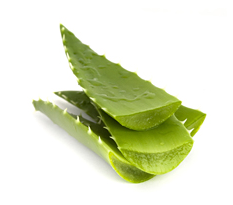
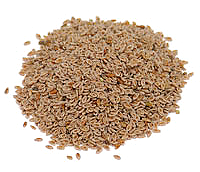 Psyllium is extracted from the crushed seeds of the Plantago ovata plant. It is commonly used in traditional medicine to treat people suffering from digestive tract problems such as hemorrhoids and constipation.
Psyllium is extracted from the crushed seeds of the Plantago ovata plant. It is commonly used in traditional medicine to treat people suffering from digestive tract problems such as hemorrhoids and constipation.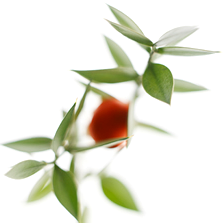 Butcher’s Broom, also known as Ruscus aculeatus, has been used for centuries to cure hemorrhoids.
Butcher’s Broom, also known as Ruscus aculeatus, has been used for centuries to cure hemorrhoids.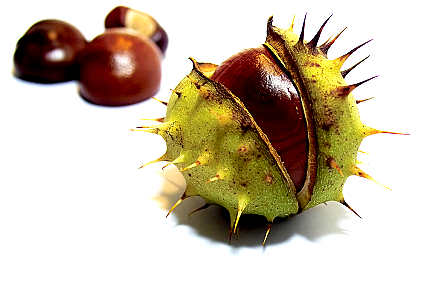
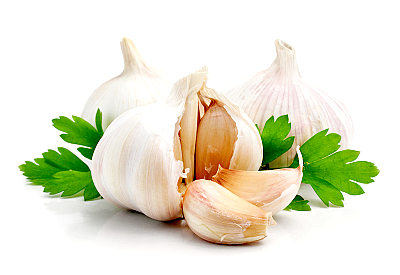 Garlic is also known as Allium sativum, is a common natural remedy for hemorrhoids and digestive disorders.
Garlic is also known as Allium sativum, is a common natural remedy for hemorrhoids and digestive disorders.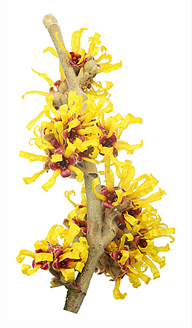 Witch hazel is the herb extracted from the bark and leaves of the North American witch hazel shrub, Hamamelis virginiana. It contains phytochemicals such as tannin, gallic acid, catechins, proanthocyanins, saponins, and choline.
Witch hazel is the herb extracted from the bark and leaves of the North American witch hazel shrub, Hamamelis virginiana. It contains phytochemicals such as tannin, gallic acid, catechins, proanthocyanins, saponins, and choline.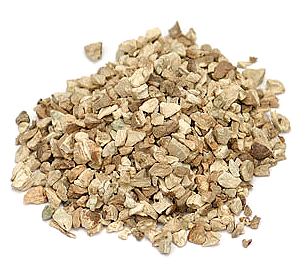 Stone root is also known as Collinsonia canadensis. This perennial herb works for hemorrhoids by reducing the pressure in the engorged veins. This effect decreases the inflammation of hemorrhoids and prevents varicose veins.
Stone root is also known as Collinsonia canadensis. This perennial herb works for hemorrhoids by reducing the pressure in the engorged veins. This effect decreases the inflammation of hemorrhoids and prevents varicose veins.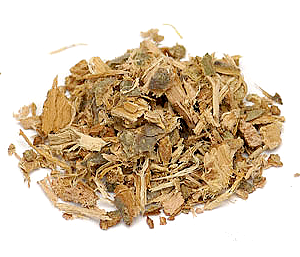 White oak bark, as the name suggests comes from the bark of the white oak plant also known as Quercus alba.
White oak bark, as the name suggests comes from the bark of the white oak plant also known as Quercus alba.